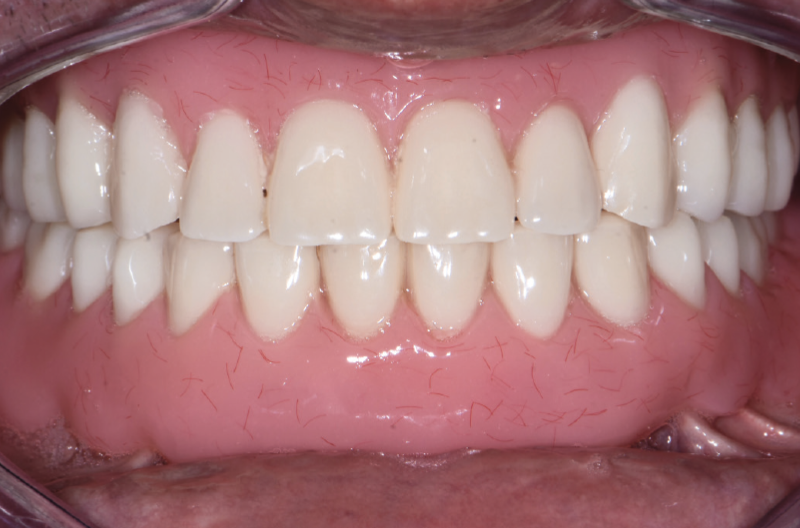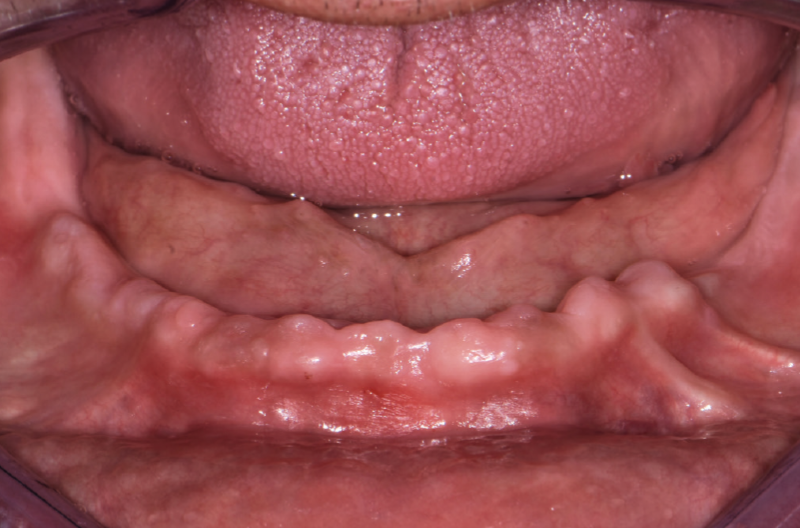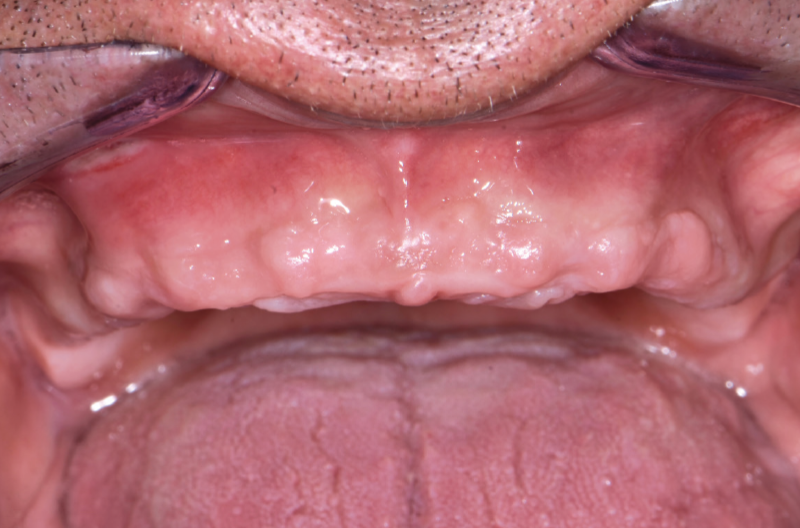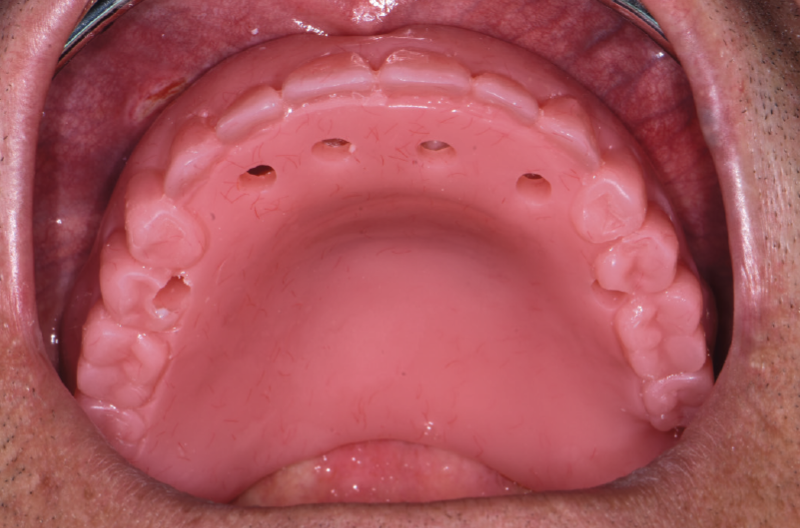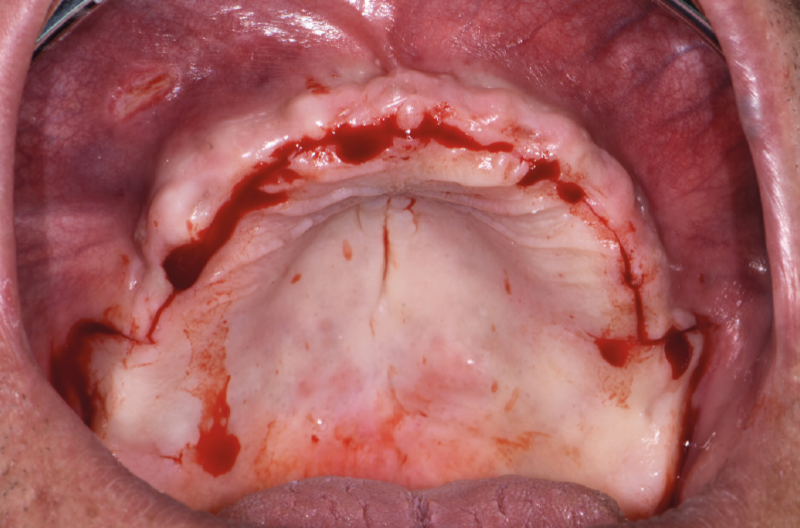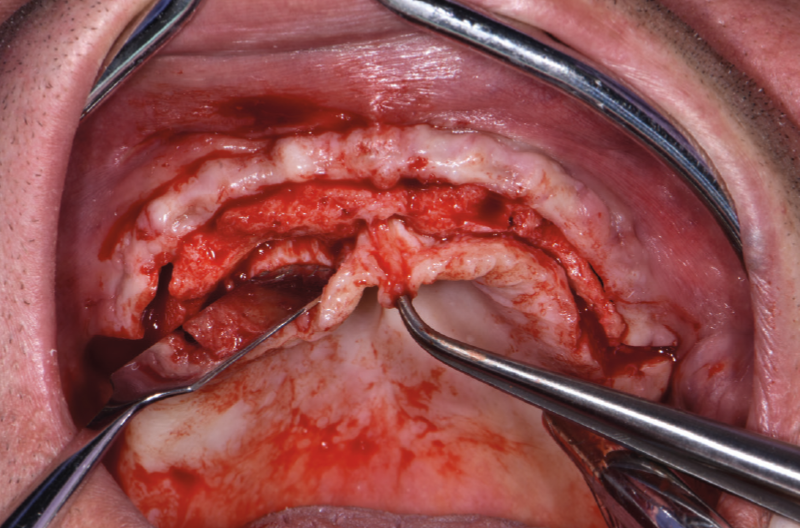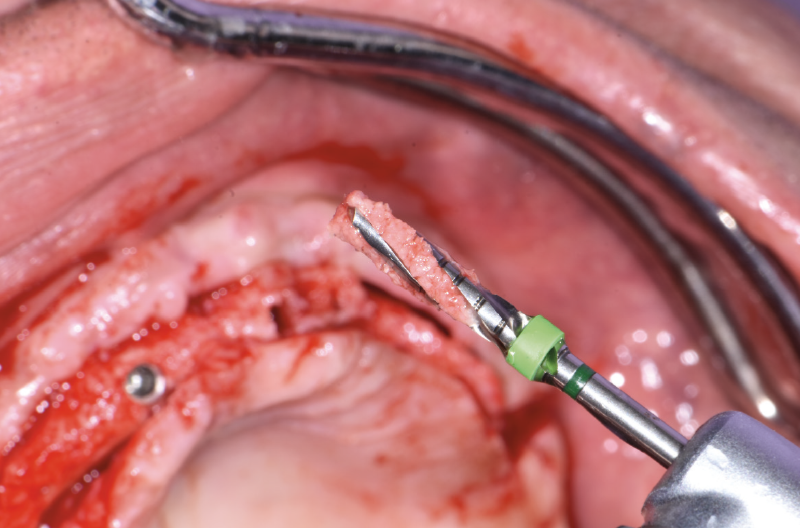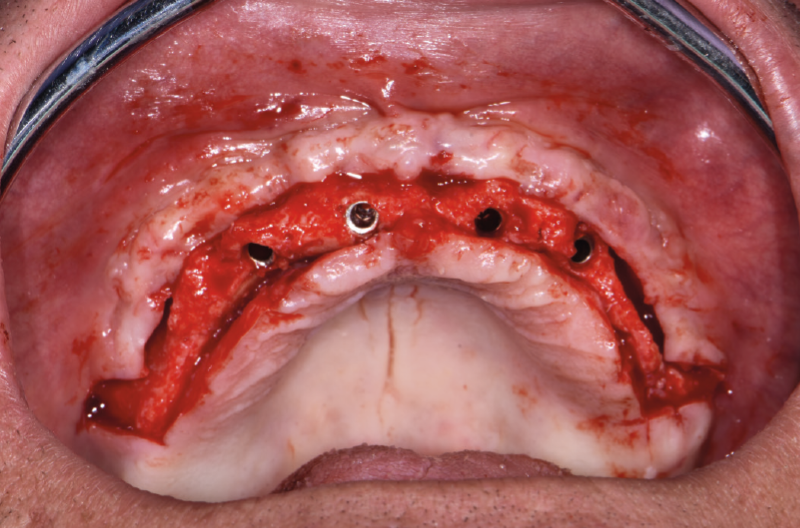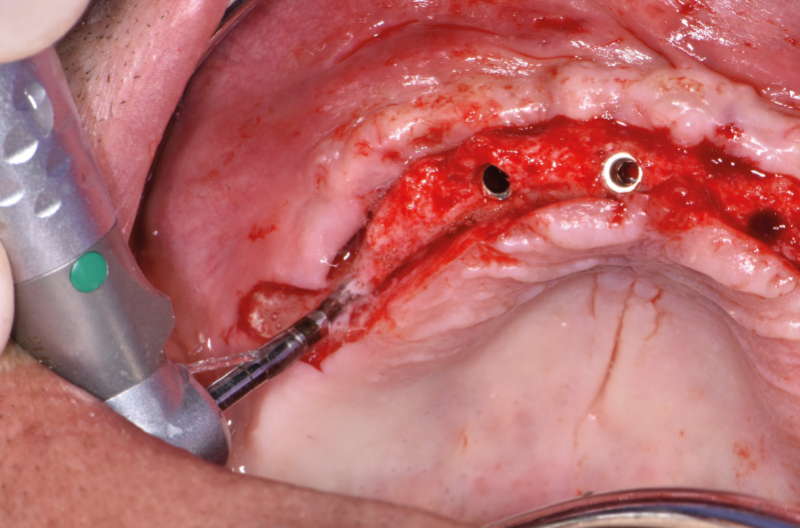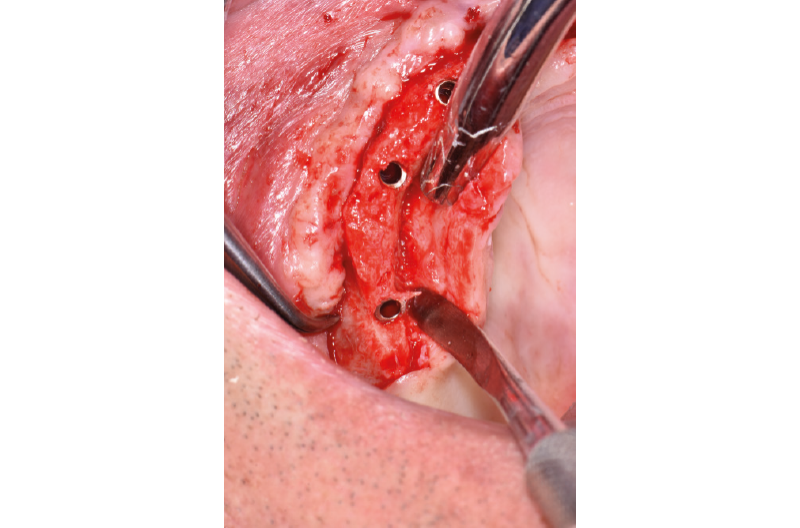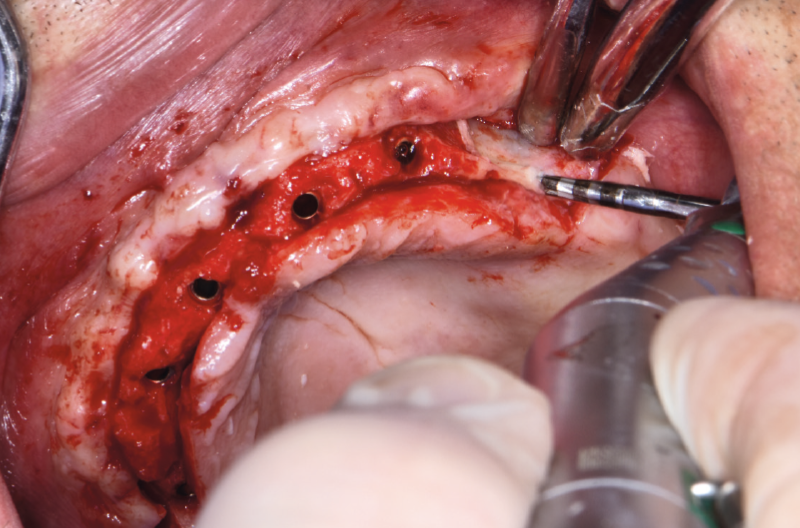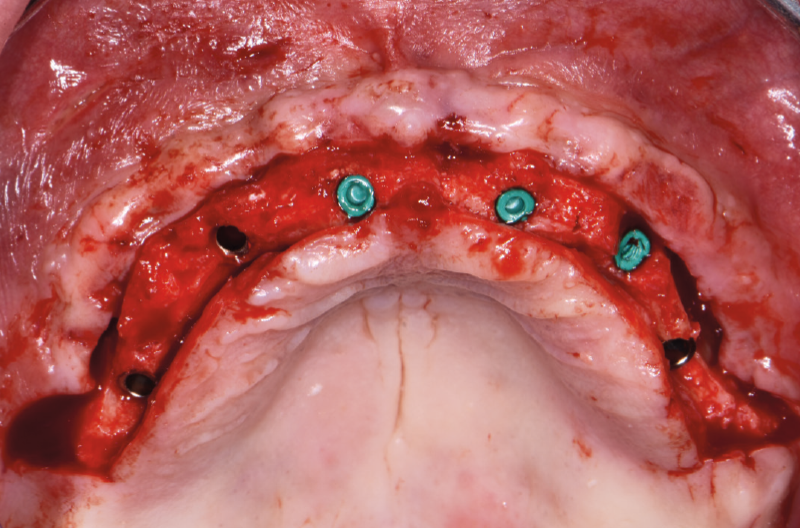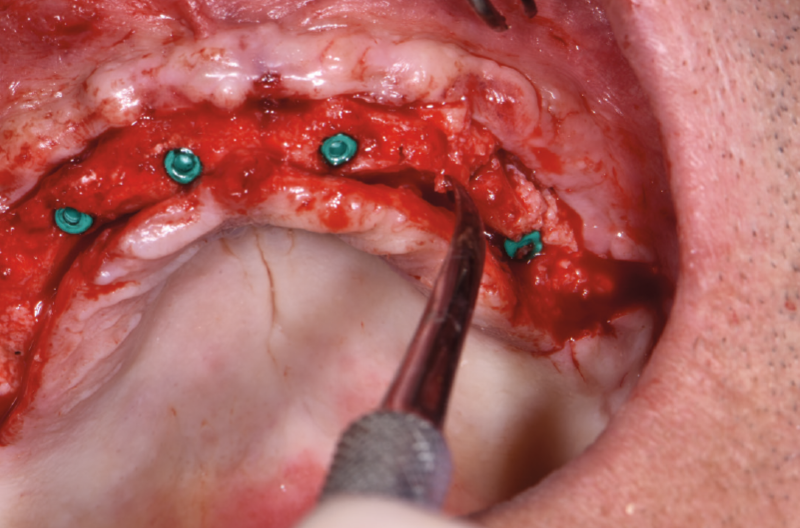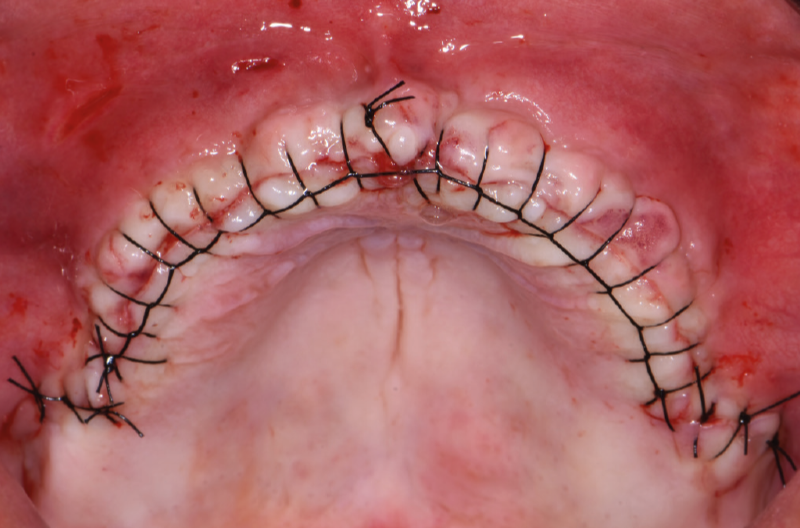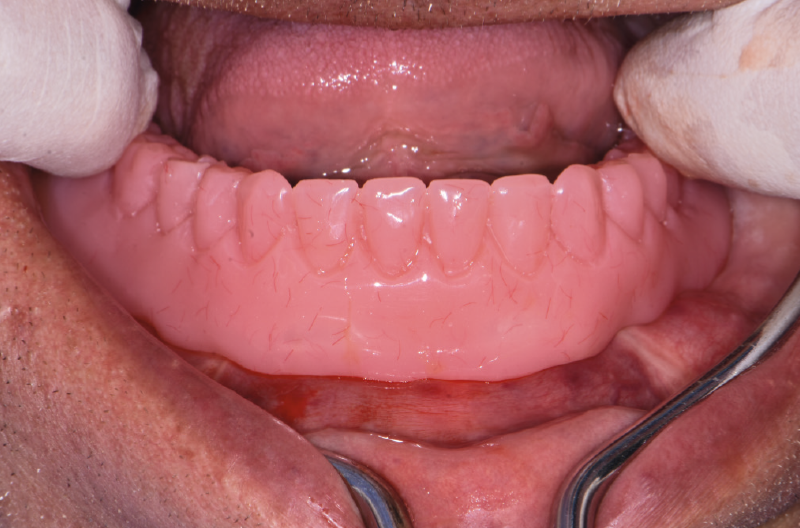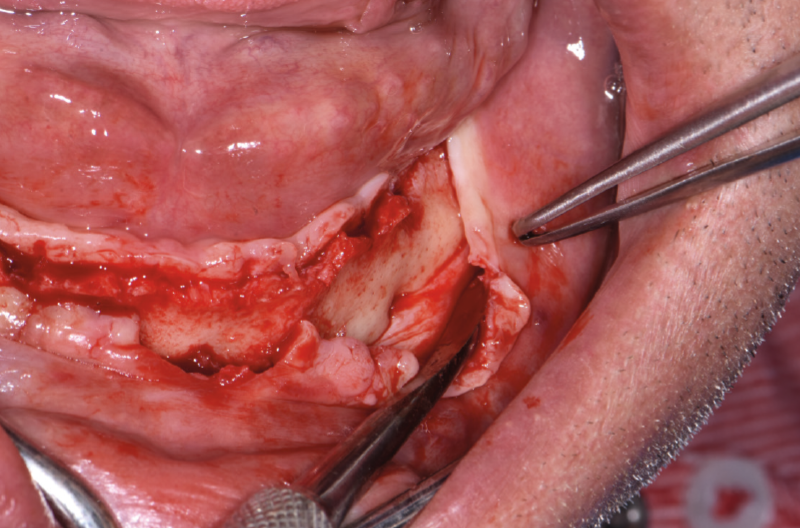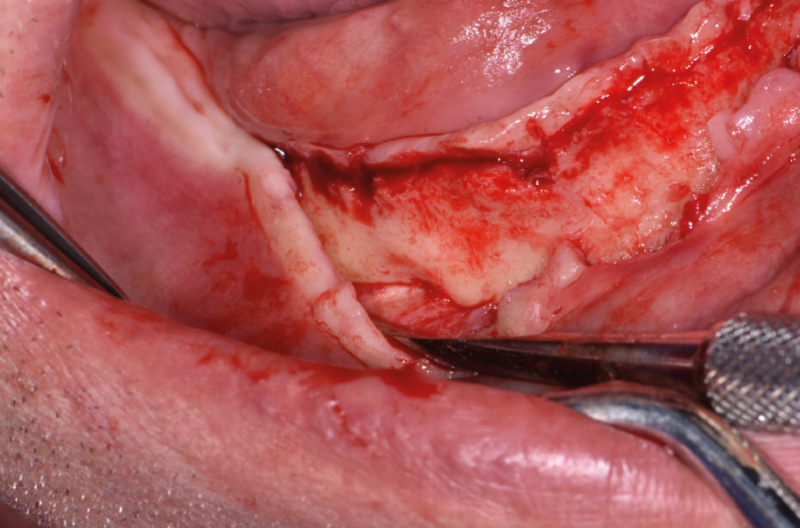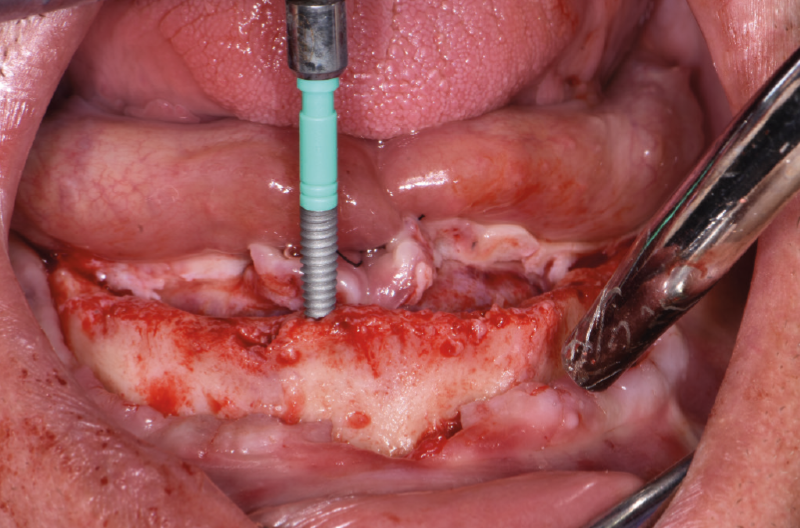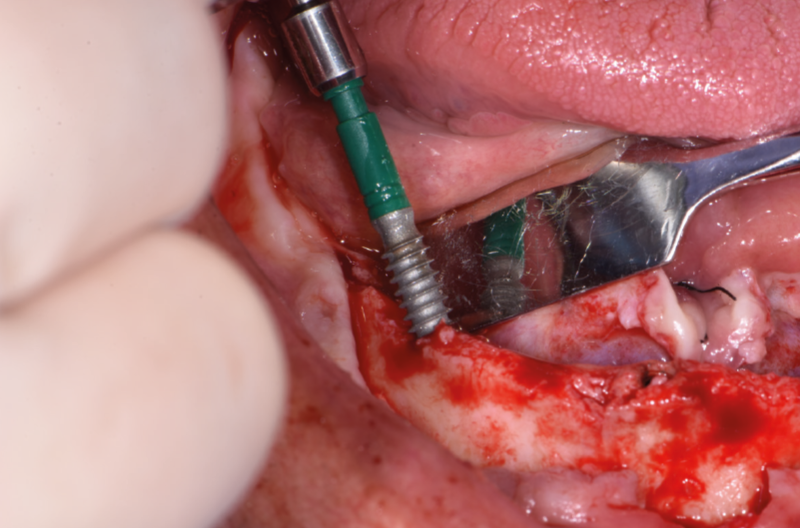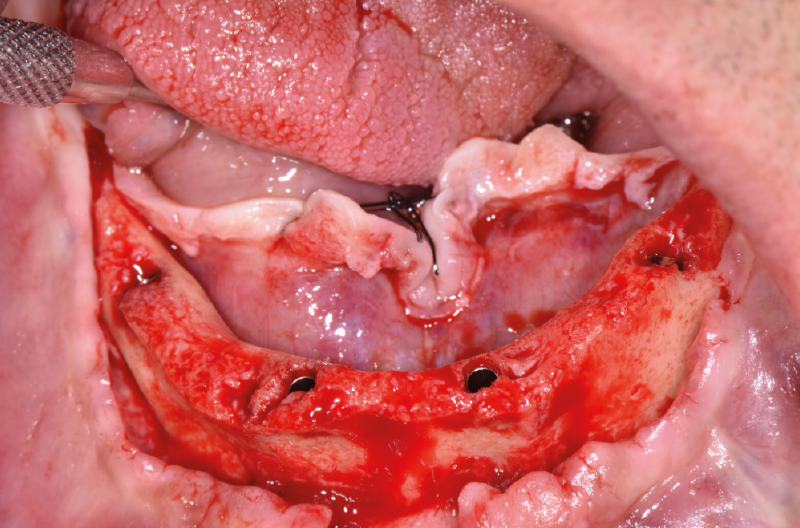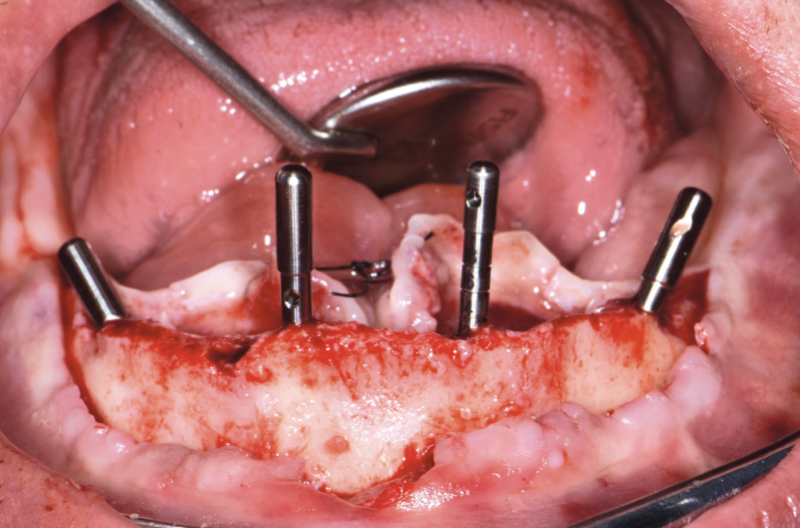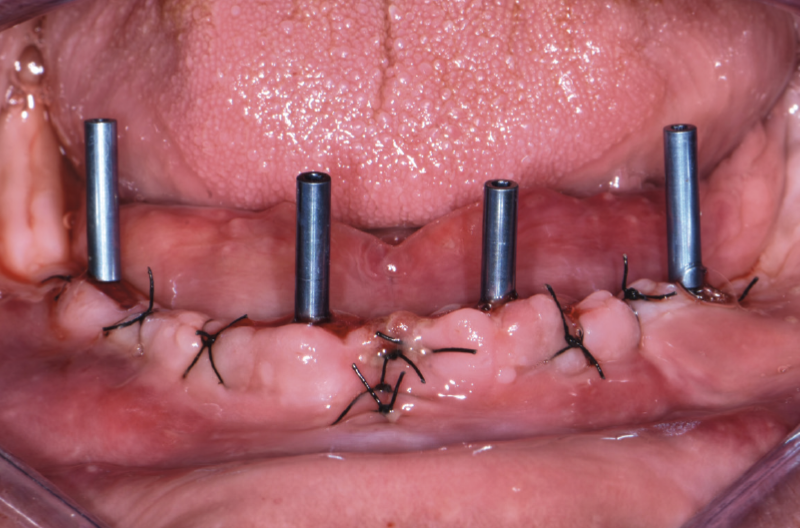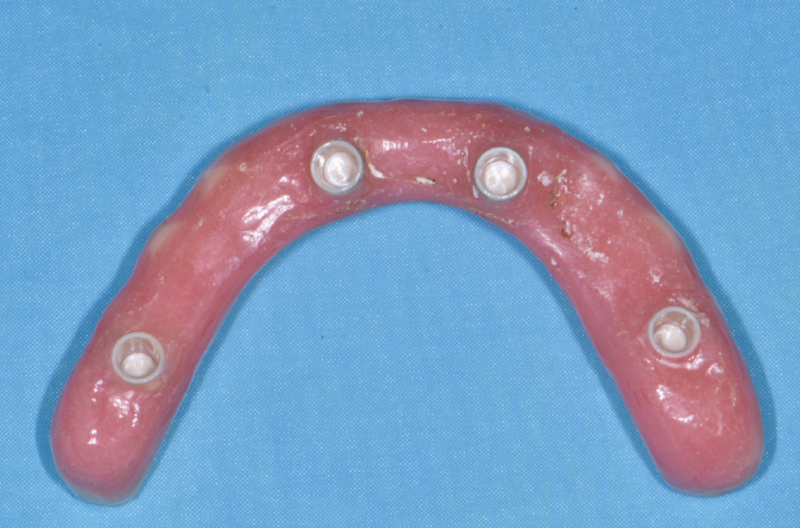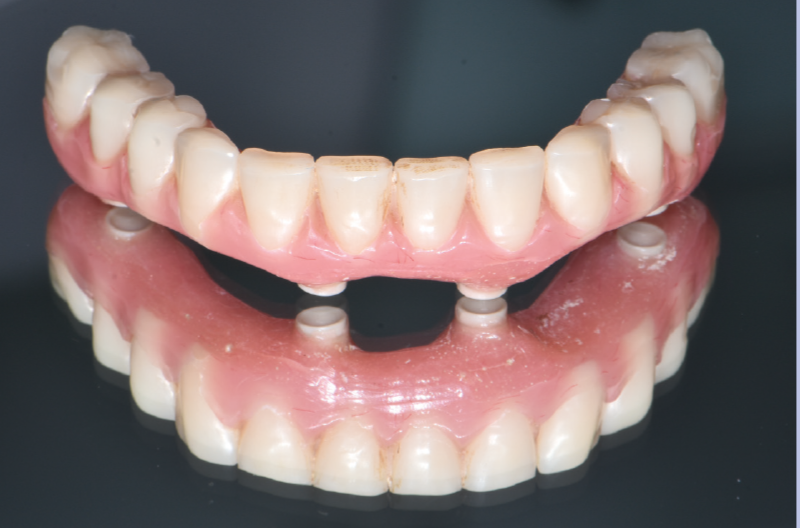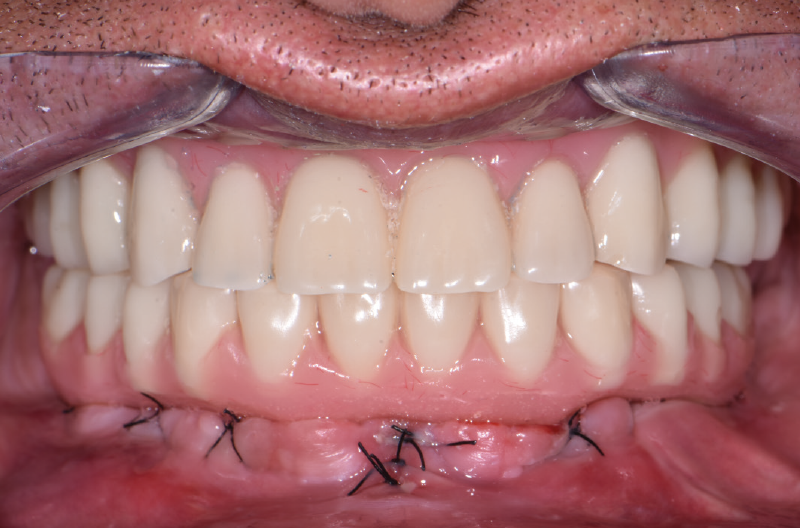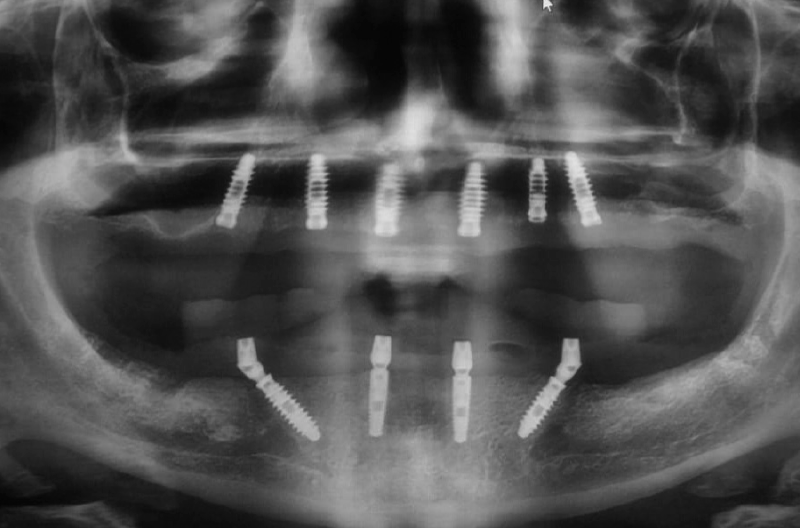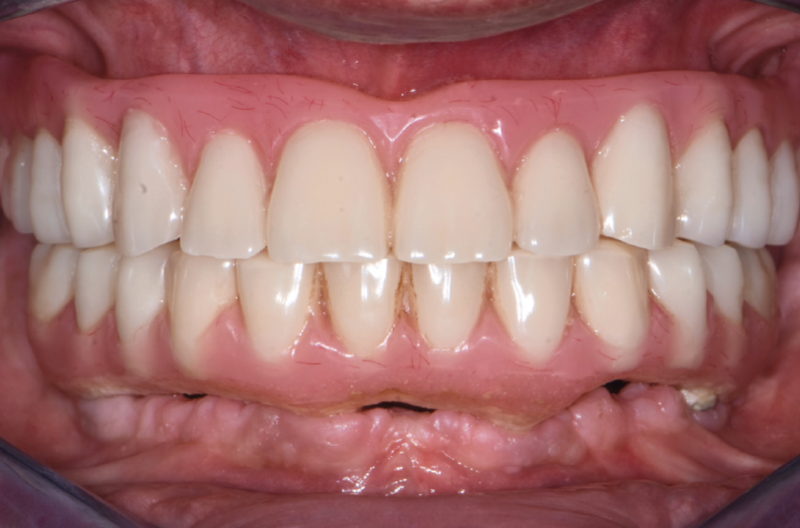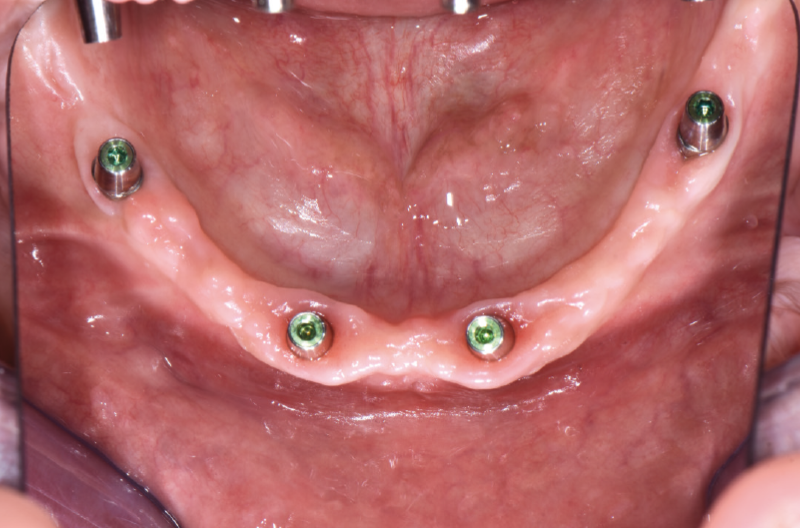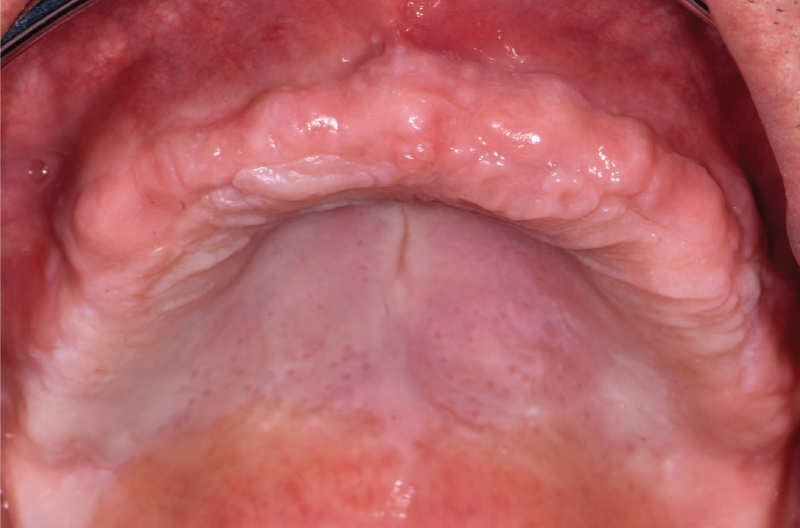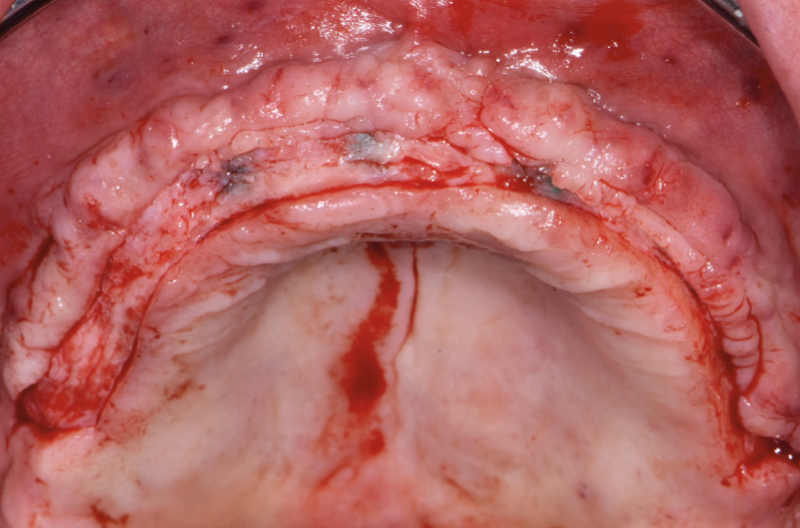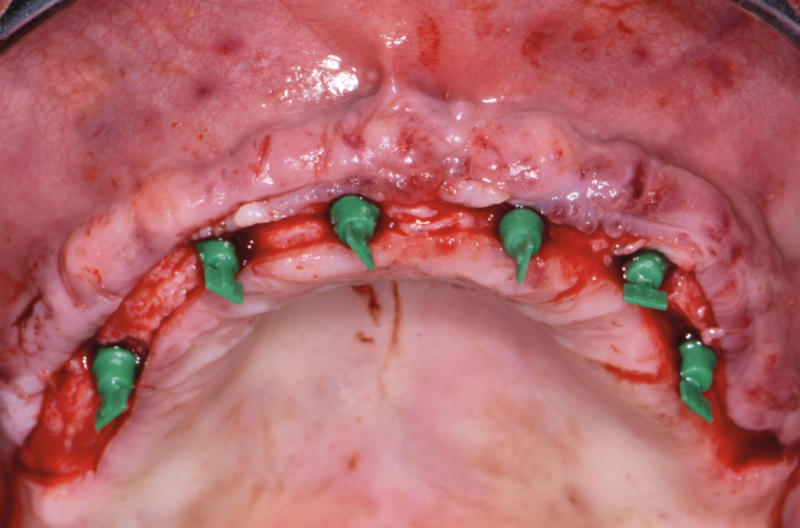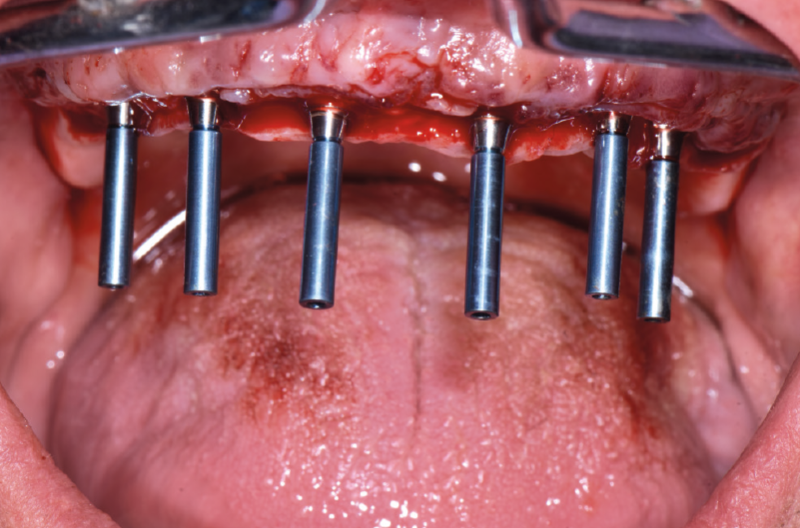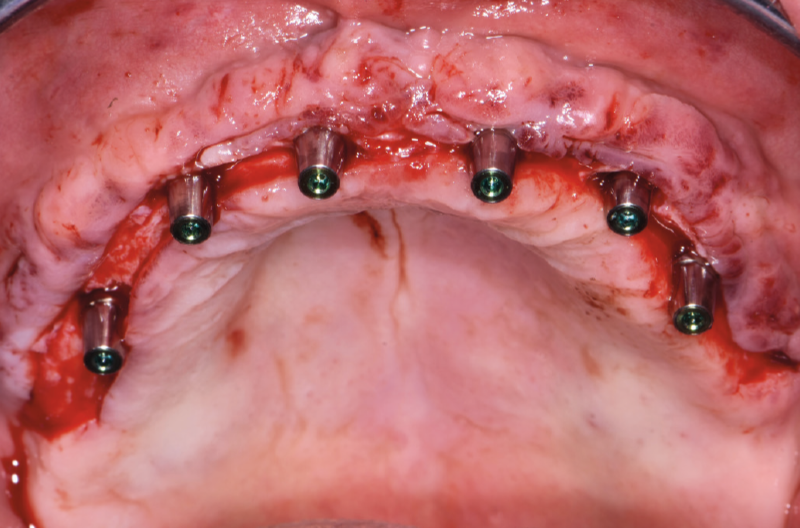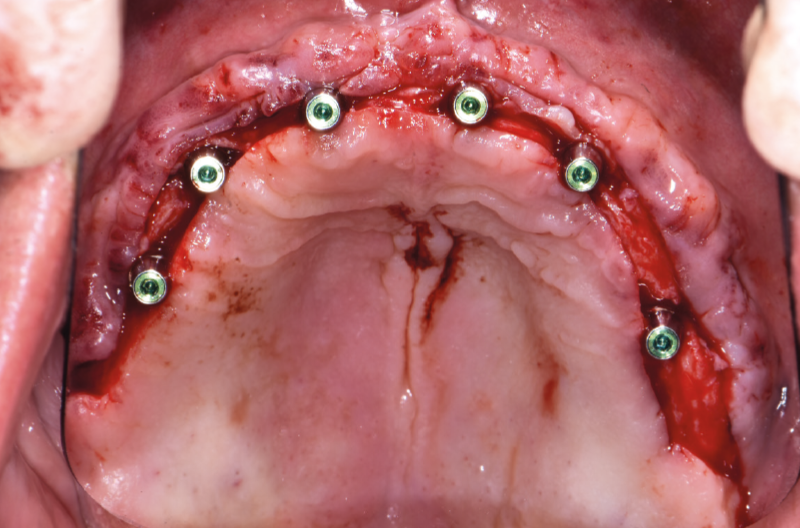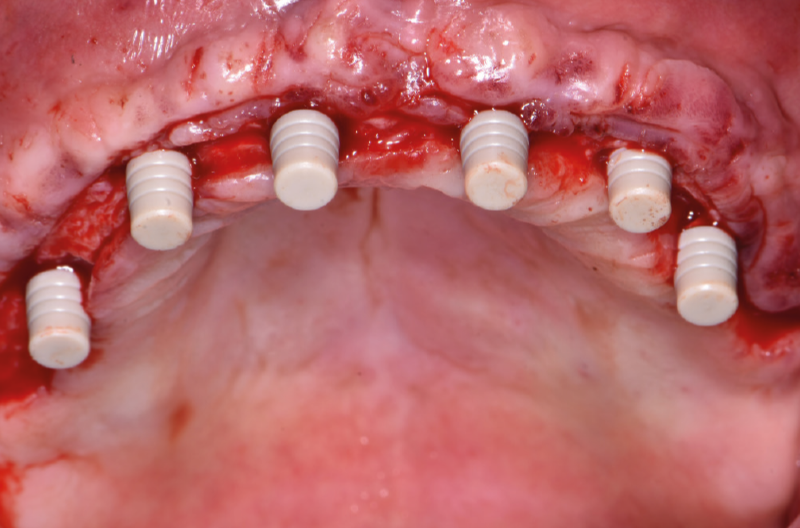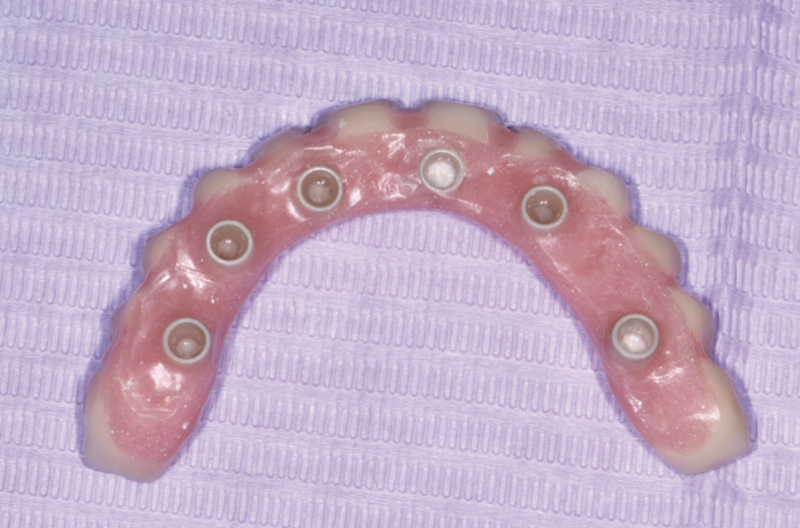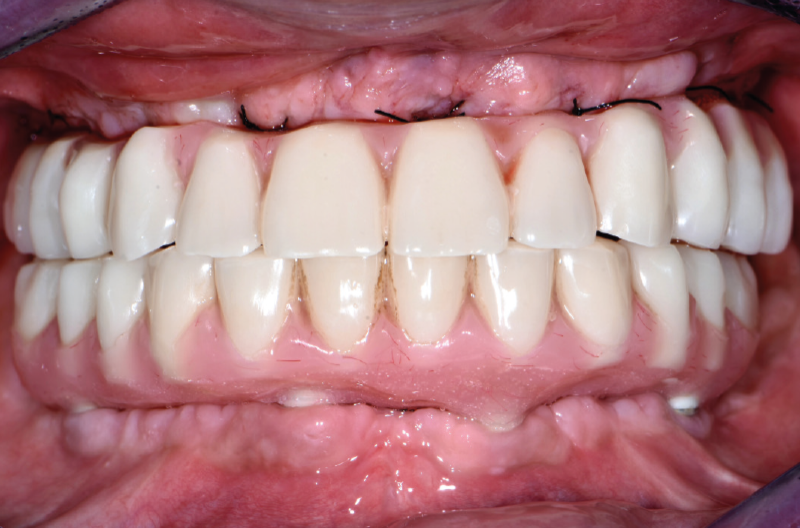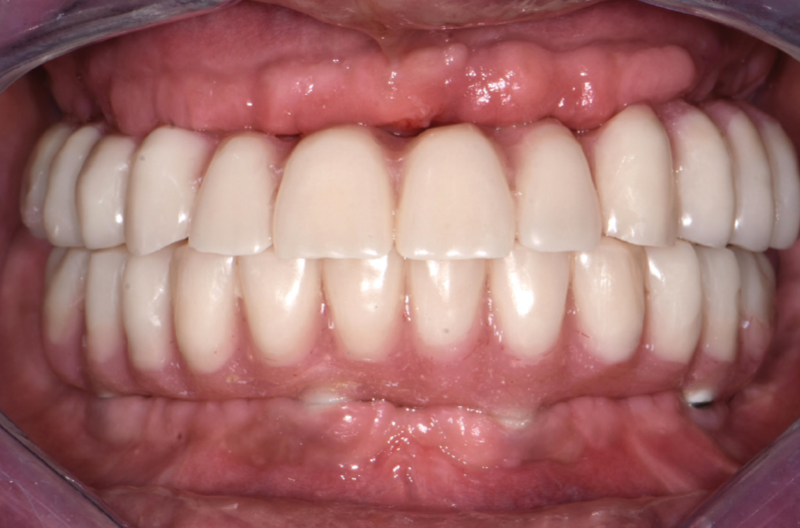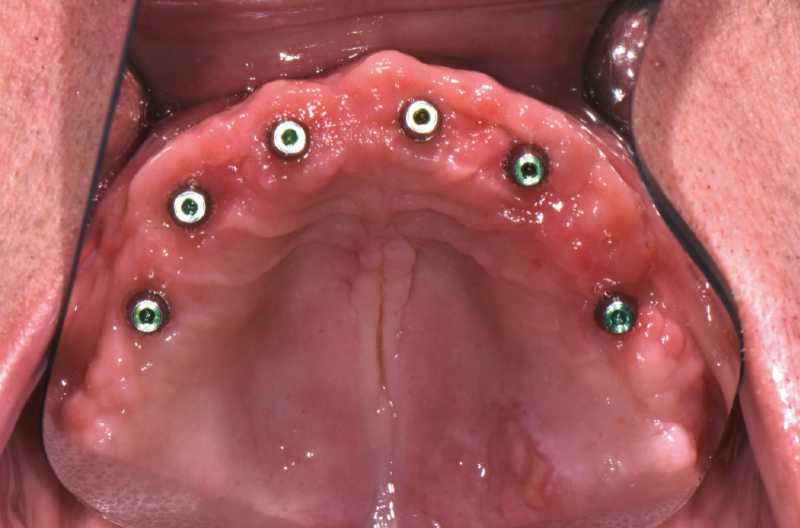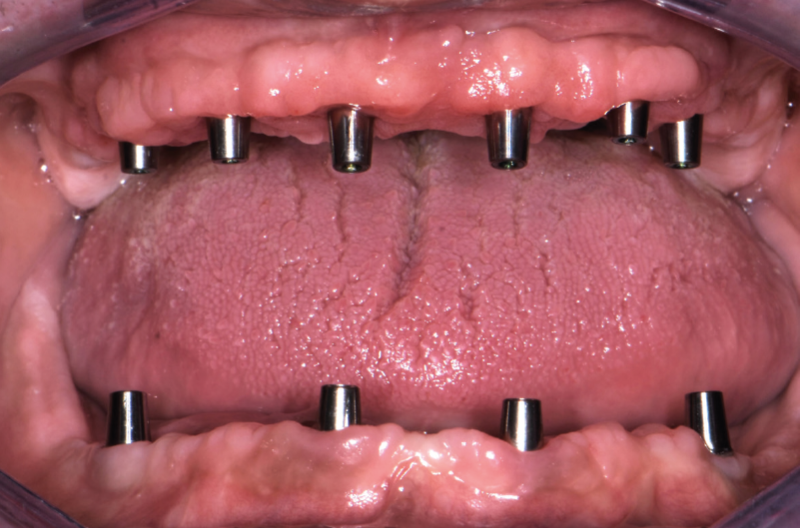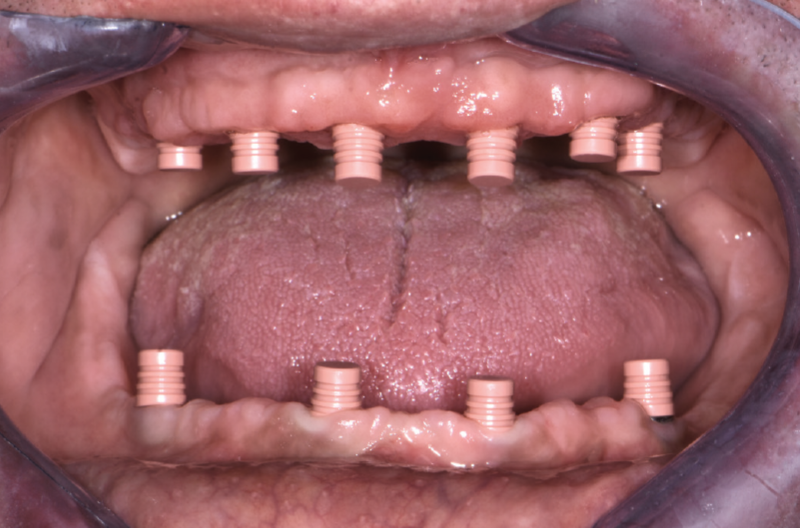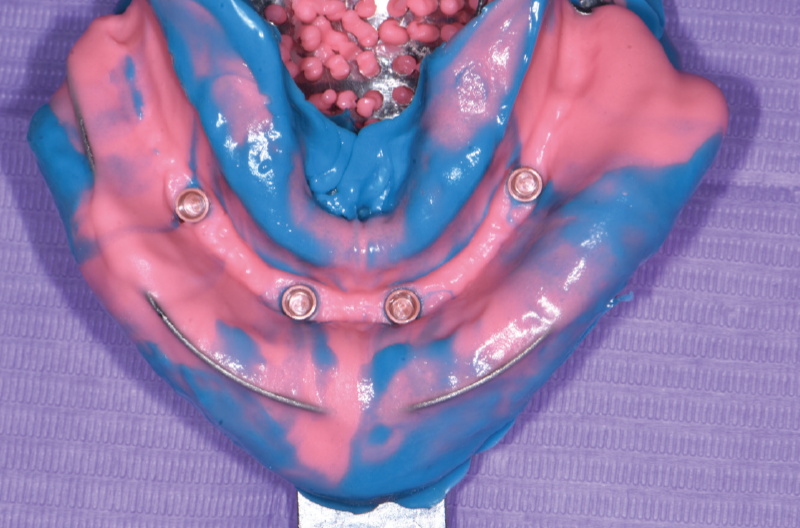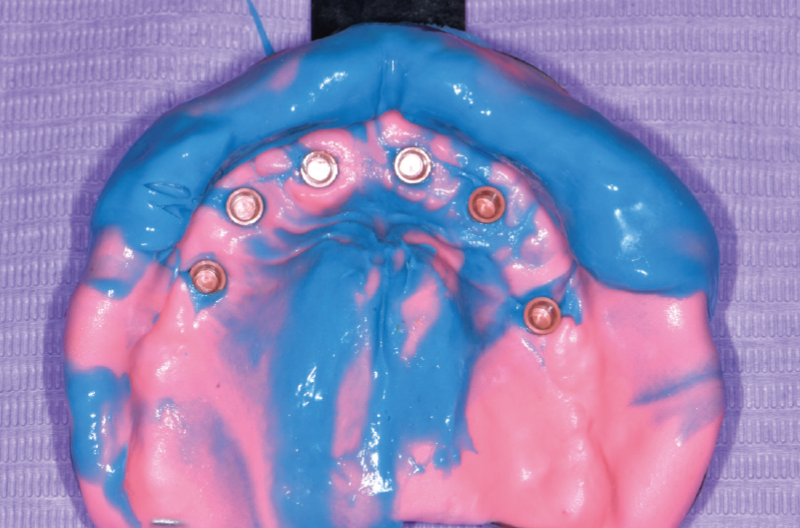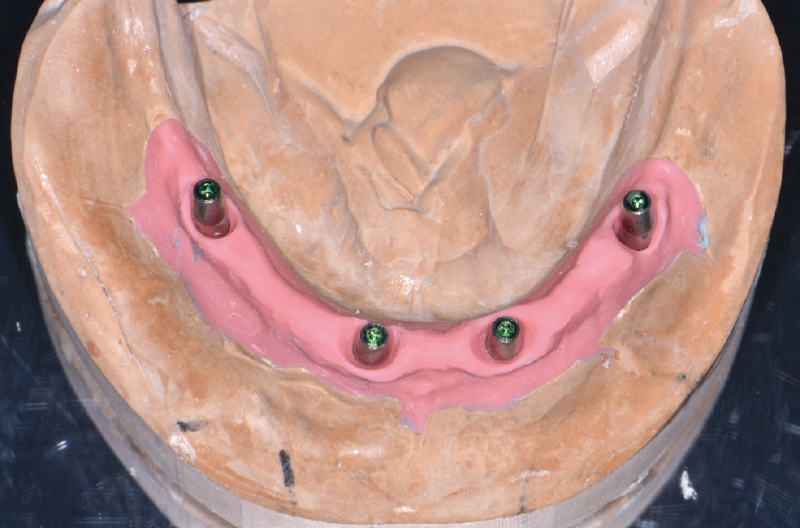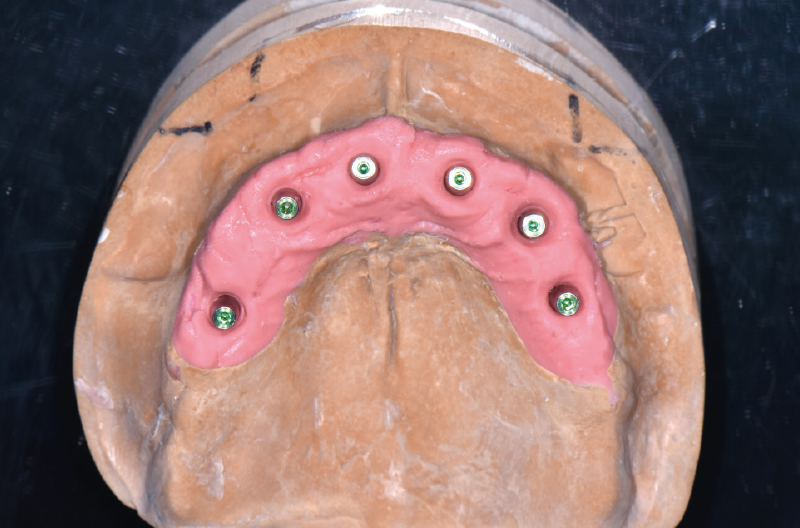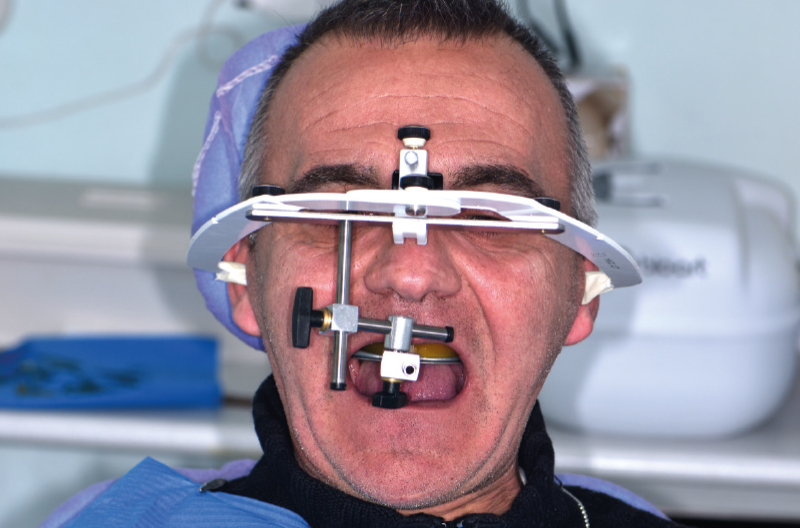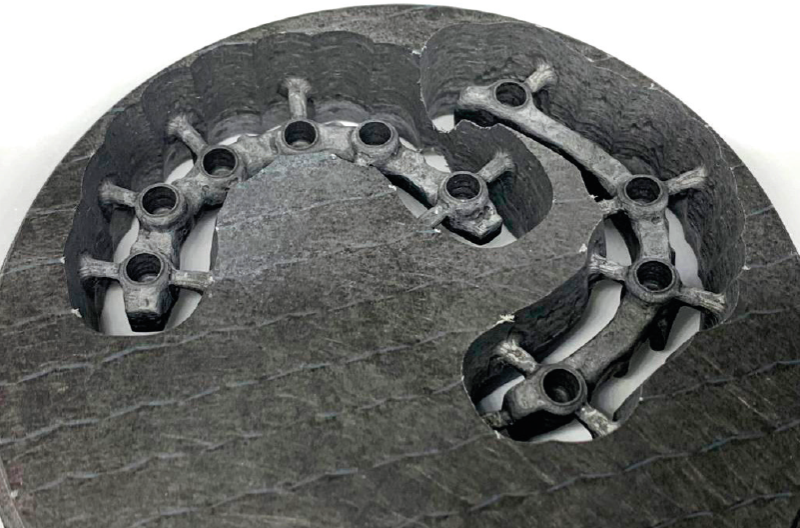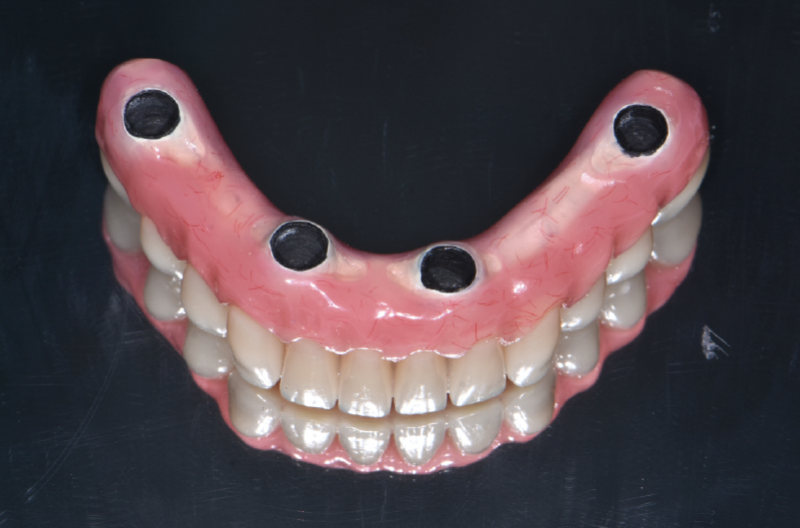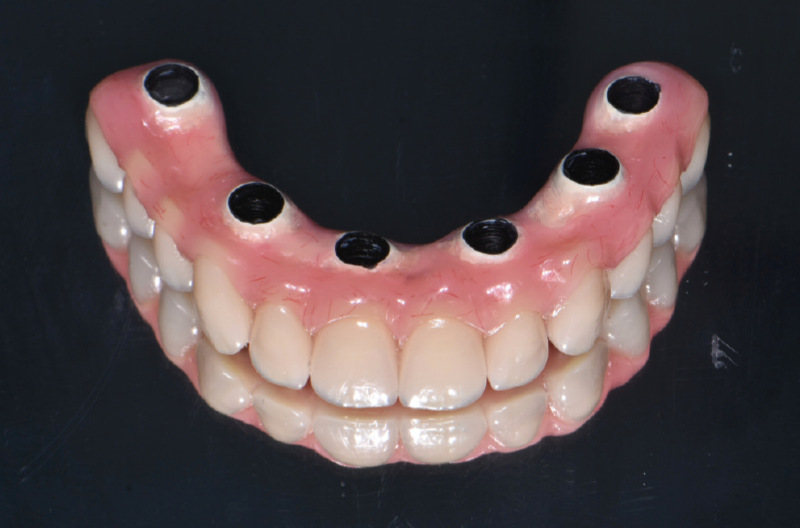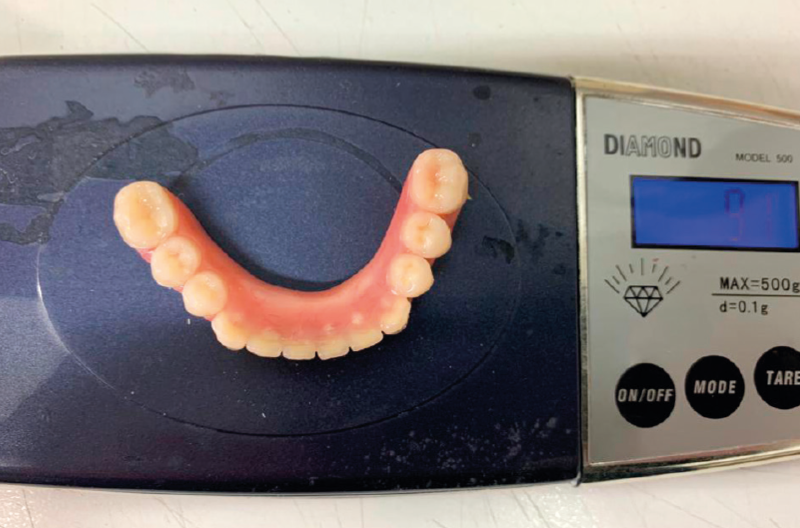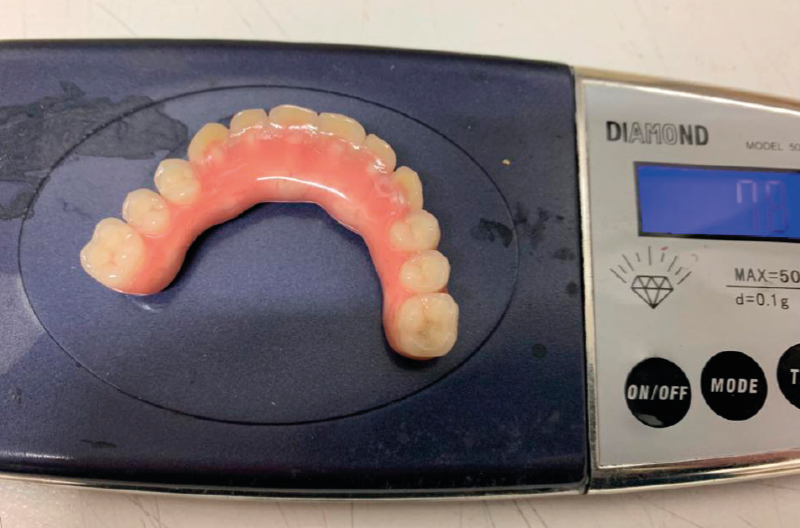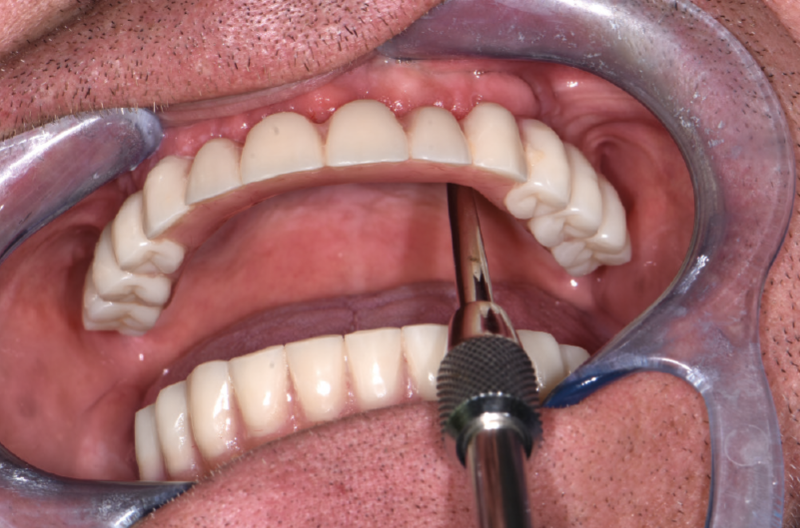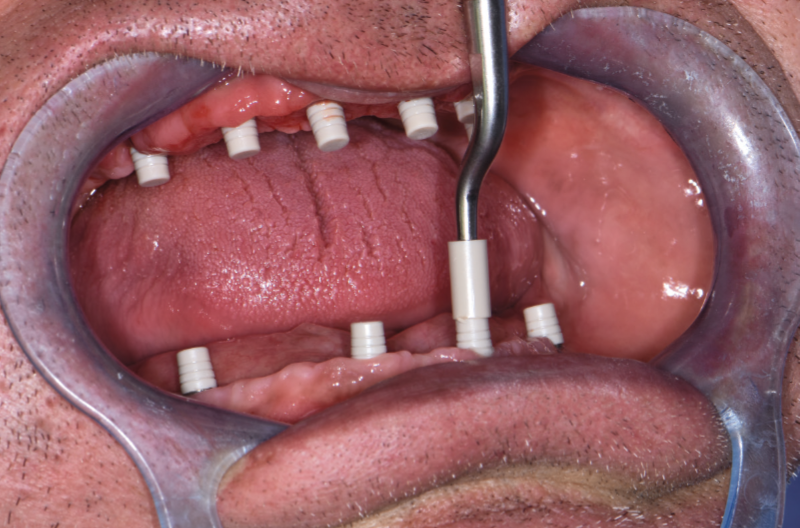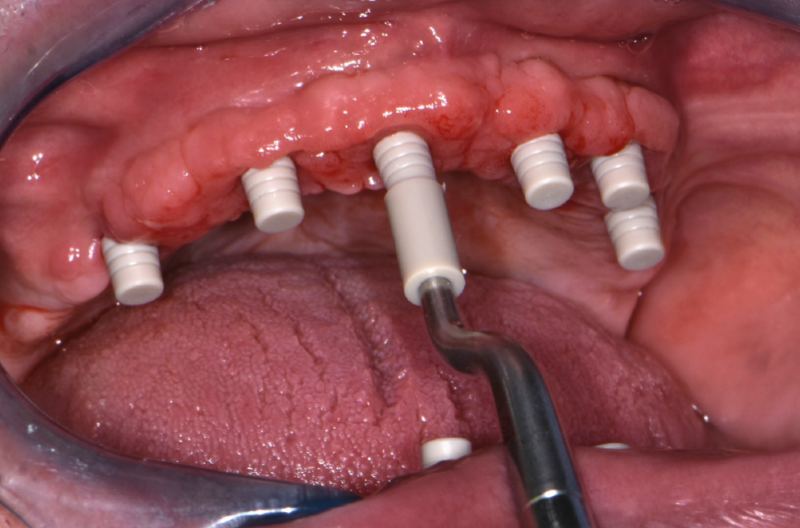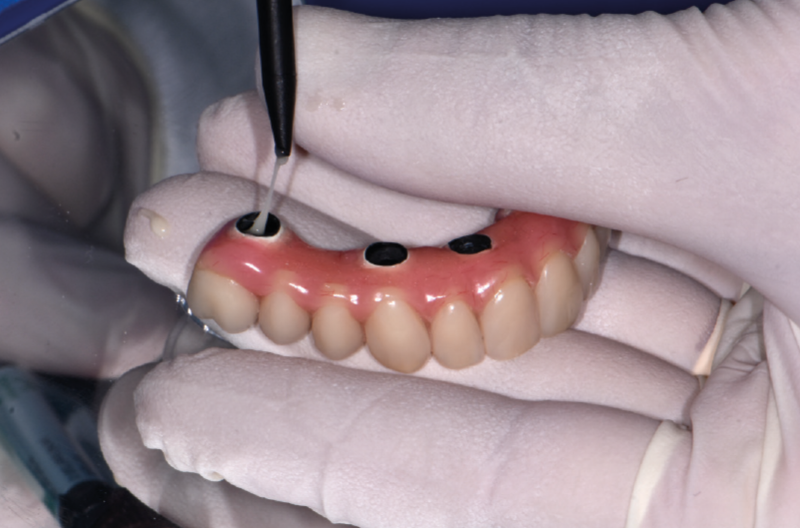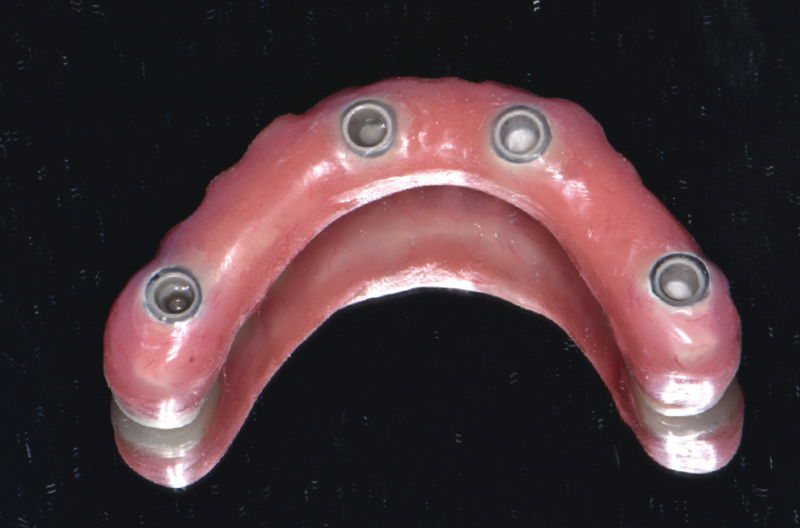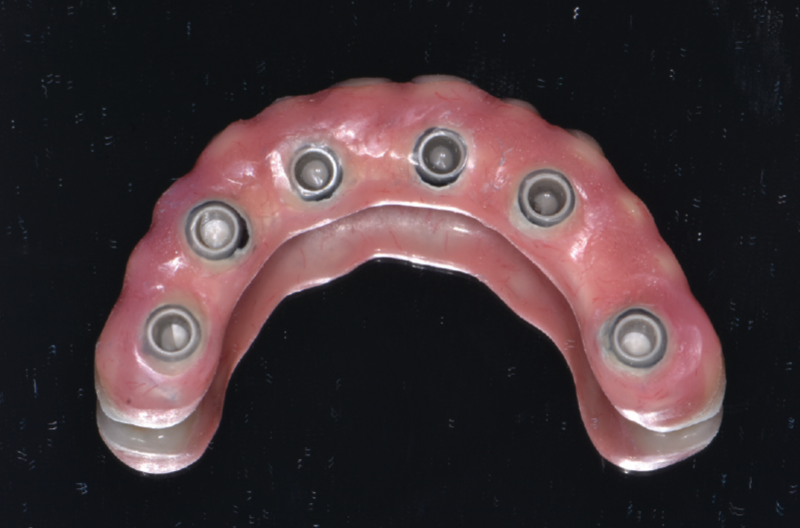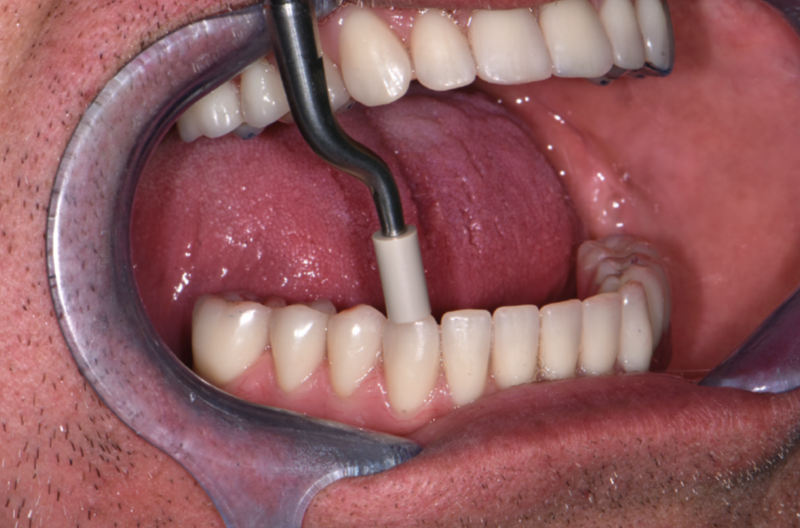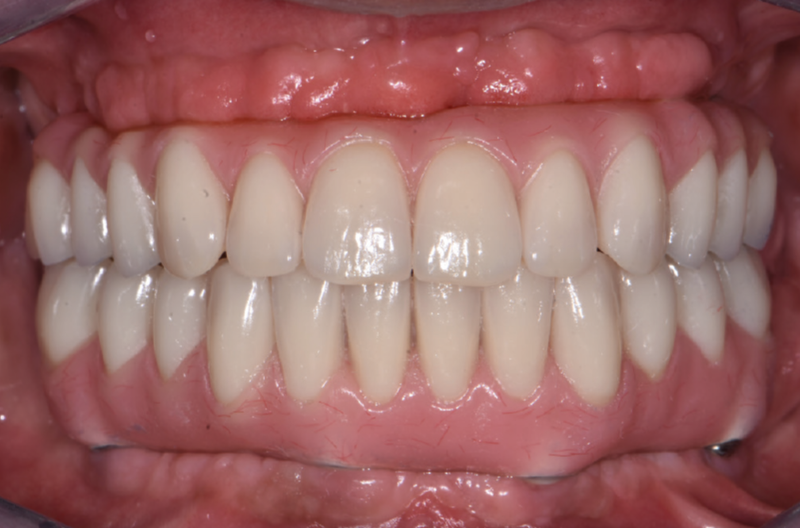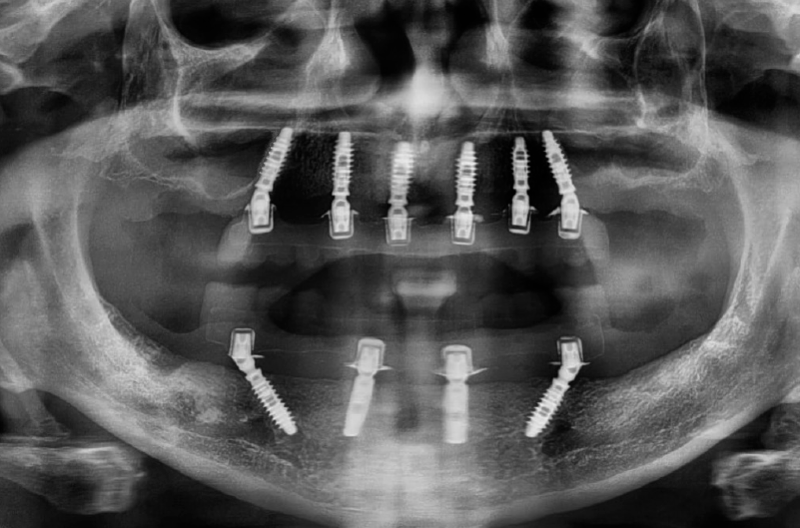Surgeons/Restorative dentists:
Dr. Giuseppe Musiello – Vico del Gargano (FG), Italy
This case report shows the immediate loading of four XCN® implants in the lower jaw with a provisional fixed full-arch conometric prosthesis and the chairside fabrication of a provisional fixed full-arch conometric prosthesis on six osseointegrated implants in the upper jaw during the second surgical stage (re-opening). The 50-year-old completely edentulous male patient asked for a fixed restoration for both jaws. After careful study of CBCT examination and stabilized intermaxillary relationships with new diagnostic removable prostheses, it was decided to place ten implants, six in the maxilla and four in the mandible. As all four implants in the mandible had a good primary stability, implants were immediately provisionalized with a fixed conometric prosthesis. Due to the poor quantity and quality of bone, in the maxilla the immediate denture was inserted during the second surgical stage after 4 months of submerged healing. After 2 months, both provisional conometric prostheses were removed for impression taking on conometric abutments in order to fabricate two final fixed conometric prostheses with carbon fiber framework and the esthetic part with teeth and gingival composite portion.
XCN® conometric prosthesis obtains the friction retention through titanium abutments (MUA-Conics) with a 5-degree tapered top (half angle) and preformed conometric caps, made of PEEK, with an internal connection with the same taper angle, that are fixed within the prosthesis. The use of conometric friction retention as anchorage system for the prosthesis simplifies and speeds up all sessions. The ease with which a removable prosthesis can be transformed into a provisional fixed conometric prosthesis is a great advantage, especially in immediate loading. The speed with which conometric prostheses are removed and repositioned during all sessions (relining, impression taking, delivery of the final prosthesis) is one of the great advantages of this prosthesis type.

Initial removable prostheses 
View of clinical situation in the lower jaw 
View of clinical situation in the upper jaw 
Upper denture replica guide to mark the implant positions 
Full thickness mucoperiosteal flap 
Isolation of palatine nerve 
Autogenous bone recovery from drill flutes 
Four 3.75 x 12 mm Max Stability implants placed in the anterior region 
Use of special osseodensification burs in region #15 to increase bone density during implant site preparation and to move the medial wall of the right maxillary sinus 
Tilted 3.75 x 12 mm Max Stability implant in region #15 placed along the medial wall of the right maxillary sinus 
Use of special osseodensification burs in region #25 to increase bone density during implant site preparation and to move the medial wall of the left maxillary sinus 
Tilted 3.75 x 12 mm Max Stability implant in region #25 placed along the medial wall of the left maxillary sinus; Insertion of cover caps 
Autologous bone grafting 
Suture 
Lower denture replica guide to mark the implant positions 
Exposure of left mental foramen 
Exposure of right mental foramen 
Placement of two 2.9 x 12 mm Narrow implants in the anterior region 
Placement of two tilted 3.75 mm Max Stability implants (12 and 14 mm) in front of the mental foramen 
View of implants placed in lower jaw 
View of implant inclinations 
Insertion of two 7.5° angled GH 1.5 mm MUAs and of two 35° angled GH 3 mm MUAs. MUAs are mounted on a blu multifunctional screw for positioning and parallelization. MUAs were properly activated in the implants and Conic Adapters were screwed on MUAs to convert into MUA-Conics 
View of finished provisional conometric prosthesis. Conometric caps were incorporated intraorally within the prosthesis transforming the removable prosthesis into a provisional fixed conometric prosthesis 
Provisional fixed conometric prosthesis 
Final situation after surgery: removable prosthesis in the upper jaw for submerged healing of the implants and immediate loading in the lower jaw with provisional fixed conometric prosthesis 
Panoramic X-ray 4 months after implant placement 
Clinical situation 4 months after implant placement 
View of MUA-Conics in the lower jaw 
View of upper jaw 
Reopening of upper jaw with partial thickness flap 
Try-in abutments placed in the implants; one straight, three 15° angled and two 25° angled MUAs, all GH 1.5 mm, were chosen 
Insertion and palallelization of MUAs; blu multifunctional screws were unscrewed and abutments properly tapped into the implants 
Conic Adapters were screwed on MUAs and tightened with the prosthetic torque wrench to convert into MUA-Conics 
Occlusal view of MUA-Conics in the upper jaw 
Fixed caps positioned onto MUA-Conics by performing 1 percussion with the PEEK tip 
View of finished provisional upper conometric prosthesis. Conometric caps were incorporated intraorally within the prosthesis with reline acrylic resin transforming the removable prosthesis into a provisional fixed conometric prosthesis 
View of upper and lower provisional conometric prostheses in place 
After 1 month, removal of both provisional conometric prostheses and relining for better soft tissue conditioning 
Occlusal view of clinical situation after removal of the provisional conometric upper prosthesis 1 month later 
Clinical situation at time of impression taking on MUA-Conics 
Fig. 41 Mobile caps used as transfer copings for the impression taking on MUA-Conics 
Lower jaw impression 
Upper jaw impression 
Dental cast of the lower jaw prepared with MUA analogs and Conic Adapters 
Dental cast of the upper jaw prepared with MUA analogs and Conic Adapters 
Registration of the vertical dimension 
Fabrication of carbon fiber frameworks for the final prostheses 
Ridge-side view of lower final prosthesis: note appropriate spaces for intraoral cementation of Fixed caps into the prosthesis 
Ridge-side view of upper final prosthesis: note appropriate spaces for intraoral cementation of Fixed caps into the prosthesis 
Final lower prosthesis with carbon fiber framework weighs only 9.1 gr 
Final upper prosthesis with carbon fiber framework weighs only 7.8 gr 
Removal of provisional conometric prostheses by gentle tapping force applied laterally on the bridge with PEEK tip and use of crown remover 
Fixed caps positioned onto MUA-Conics in the lower jaw by performing 1 percussion with the PEEK tip 
Fixed caps positioned onto MUA-Conics in the upper jaw by performing 1 percussion with the PEEK tip 
Intraoral cementation of final prostheses on Fixed caps with a dual resin cement 
View of final lower prosthesis with incorporated Fixed caps after excess cement cleaning and polishing 
View of final upper prosthesis with incorporated Fixed caps after excess cement cleaning and polishing 
Activation of final prostheses on MUA Conics by tapping with the PEEK tip on the teeth nearby MUA-Conics 
View of final prostheses activated on MUA-Conics 
Panoramic X-ray after delivery of final prostheses. Note that Fixed caps, made of PEEK, are radiolucent
Laboratory:
Pasquale Martino – Foggia, Italy


